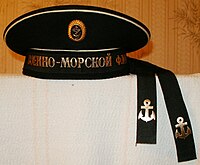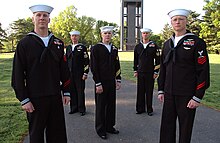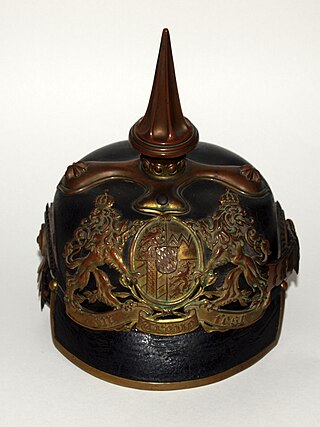
The Pickelhaube, also Pickelhelm, is a spiked leather or metal helmet that was worn in the 19th and 20th centuries by Prussian and German military officers, firefighters and police. Although it is typically associated with the Prussian Army, which adopted it in 1842–43, the helmet was widely imitated by other armies during that period. It is still worn today as part of ceremonial wear in the militaries of certain countries, such as Sweden, Chile, and Colombia.

A slouch hat is a wide-brimmed felt or cloth hat most commonly worn as part of a military uniform, often, although not always, with a chinstrap. It has been worn by military personnel from many different nations including Australia, Ireland, the United Kingdom, Canada, India, New Zealand, Southern Rhodesia, France, the United States, the Confederate States, Germany and many others. Australia and New Zealand have had various models of slouch hat as standard issue headwear since the late Victorian period.

The kepi is a cap with a flat circular top and a peak, or visor. In English, the term is a loanword of French: képi, itself a re-spelled version of the Alemannic German: Käppi, a diminutive form of Kappe, meaning "cap". In Europe, this headgear is most commonly associated with French military and police uniforms, though versions of it were widely worn by other armies during the late 19th and early 20th centuries. In North America, it is usually associated with the American Civil War, as it was worn by soldiers on both sides of the conflict.

Formal wear or full dress is the Western dress code category applicable for the most formal occasions, such as weddings, christenings, confirmations, funerals, Easter and Christmas traditions, in addition to certain state dinners, audiences, balls, and horse racing events. Formal wear is traditionally divided into formal day and evening wear, implying morning dress before 6 p.m., and white tie after 6 p.m. Generally permitted other alternatives, though, are the most formal versions of ceremonial dresses, full dress uniforms, religious clothing, national costumes, and most rarely frock coats. In addition, formal wear is often instructed to be worn with official full size orders and medals.

Fusilier is a name given to various kinds of soldiers; its meaning depends on the historical context. While fusilier is derived from the 17th-century French word fusil – meaning a type of flintlock musket – the term has been used in contrasting ways in different countries and at different times, including soldiers guarding artillery, various elite units, ordinary line infantry and other uses.
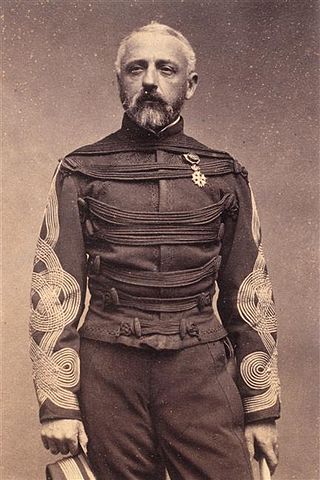
An Austrian knot, alternatively warrior's knot or vitézkötés, is an elaborate design of twisted cord or lace worn as part of a dress uniform, usually on the lower sleeve. It is usually a distinction worn by officers; the major exception is the hussars, in which Austrian knots are worn by all ranks. British cadet under officers wear Austrian knots as part of their rank insignia.

A military uniform is a standardised dress worn by members of the armed forces and paramilitaries of various nations.

A bearskin is a tall fur cap, usually worn as part of a ceremonial military uniform. Traditionally, the bearskin was the headgear of grenadiers, and remains in use by grenadier and guards regiments in various armies.

Mess dress uniform is the most formal type of evening-wear uniform used by military personnel, police personnel, and other uniformed services members. It frequently consists of a mess jacket, trousers, white dress shirt and a black bow tie, along with orders and medals insignia. Design may depend on regiment or service branch, e.g. army, navy, air force, marines, etc. In modern Western dress codes, mess dress uniform is the supplementary alternative equivalent to the civilian black tie for evening wear. Mess dress uniforms are typically less formal than full dress uniform, but more formal than service dress uniform.
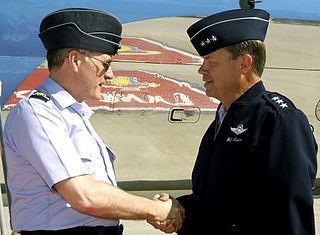
A side cap is a military cap that can be folded flat when not being worn. It is also known as a garrison cap or flight cap in the United States, wedge cap in Canada, or field service cap in the United Kingdom; or in vulgar slang as a cunt cap. In form the side cap is comparable to the glengarry, a folding version of the Scottish military bonnet. It has been associated with various military forces since the middle of the 19th century, as well as various civilian organizations.

The peaked cap, peaked hat, service cap, barracks cover or combination cap is a form of headgear worn by the armed forces of many nations, as well as many uniformed civilian organisations such as law enforcement agencies and fire departments. It derives its name from its short visor, or peak, which was historically made of polished leather but increasingly is made of a cheaper synthetic substitute.
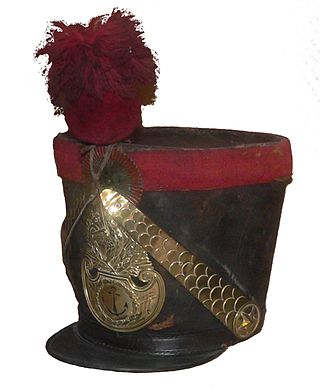
A shako is a tall, cylindrical military cap, usually with a visor, and sometimes tapered at the top. It is usually adorned with an ornamental plate or badge on the front, metallic or otherwise; and often has a feather, plume or pompom attached at the top.
Forage cap is the designation given to various types of military undress, fatigue or working headwear. These vary widely in form, according to country or period. The coloured peaked cap worn by the modern British Army for parade and other dress occasions is still officially designated as a forage cap.

Full dress uniform, also known as a ceremonial dress uniform or parade dress uniform, is the most formal type of uniforms used by military, police, fire and other public uniformed services for official parades, ceremonies, and receptions, including private ones such as marriages and funerals. Full dress uniforms typically include full-size orders and medals insignia. Styles tend to trace back to uniforms used during the 19th century, although the 20th century saw the adoption of mess dress-styled full-dress uniforms. Designs may depend on regiment or service branch. In Western dress codes, full dress uniform is a permitted supplementary alternative equivalent to the civilian white tie for evening wear or morning dress for day wear – sometimes collectively called full dress – although military uniforms are the same for day and evening wear. As such, full dress uniform is the most formal uniform, followed by the mess dress uniform.

The uniforms of the United States Navy include dress uniforms, daily service uniforms, working uniforms, and uniforms for special situations, which have varied throughout the history of the navy. For simplicity in this article, officers refers to both commissioned officers and warrant officers.

The United States Marine Corps (USMC) prescribes several types of military uniform to distinguish its service members from other armed services, depending on the situation.

Workwear is clothing worn for work, especially work that involves manual labour. Often those employed within trade industries elect to be outfitted in workwear because it is built to provide durability and safety.
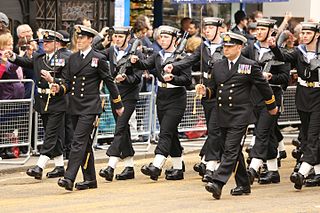
The uniforms of the Royal Navy have evolved gradually since the first uniform regulations for officers were issued in 1748. The predominant colours of Royal Navy uniforms are navy blue and white. Since reforms in 1997 male and female ratings have worn the same ceremonial uniform.
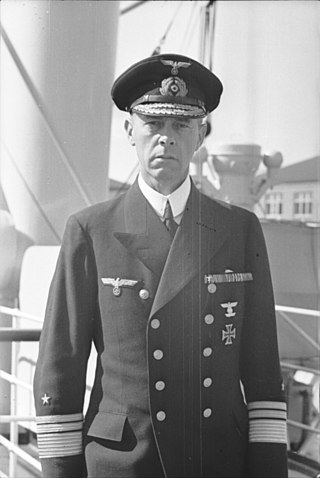
The Kriegsmarine was the navy of Nazi Germany prior to and during World War II. Kriegsmarine uniform design followed that of the preexisting Reichsmarine, itself based on that of the First World War Kaiserliche Marine. Kriegsmarine styles of uniform and insignia had many features in common with those of other European navies, all derived from the British Royal Navy of the 19th century, such as officers' frock coats, sleeve braid, and the "sailor suit" uniform for enlisted personnel and petty officers.

The Royal Marines uniform is the standardised military dress worn by members of the Royal Marines.
